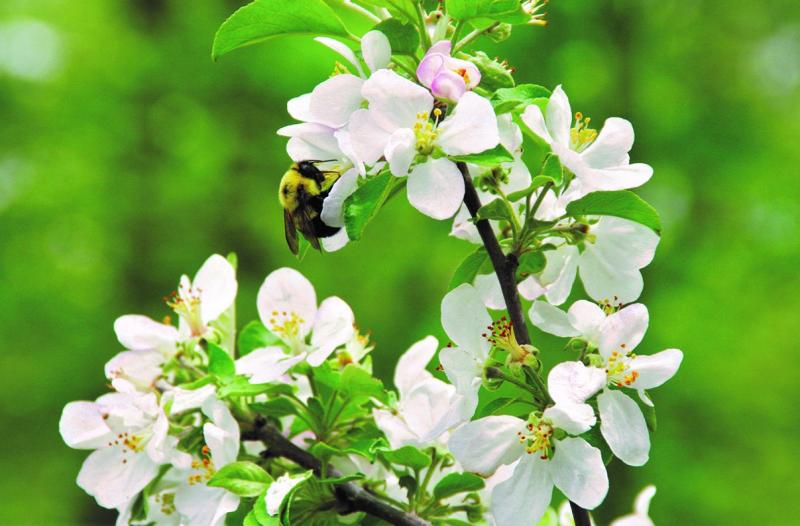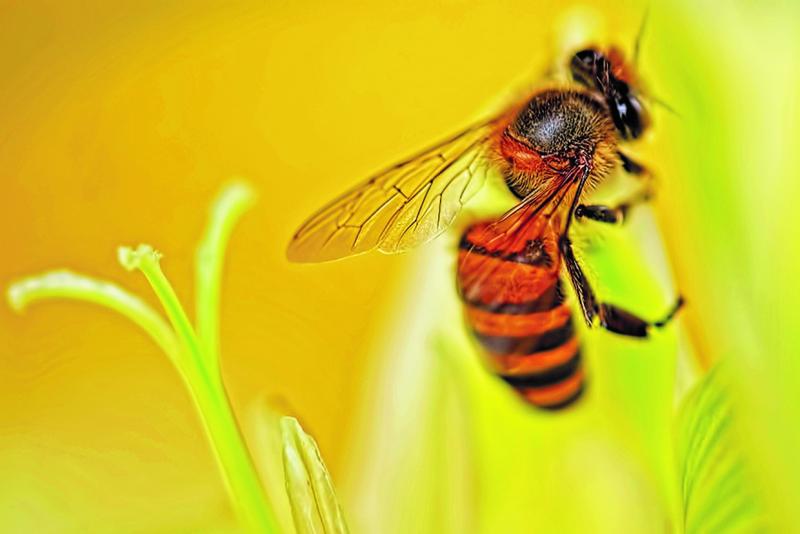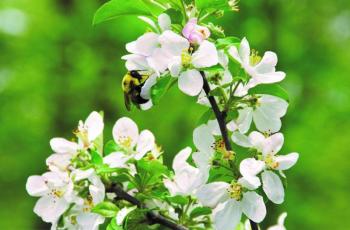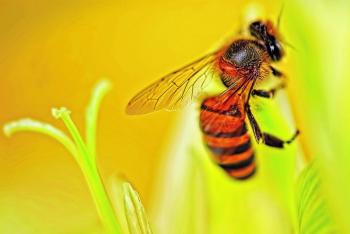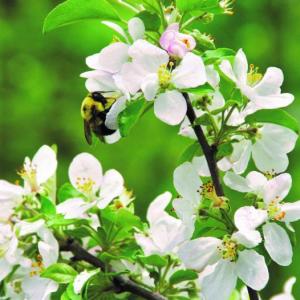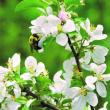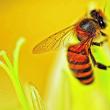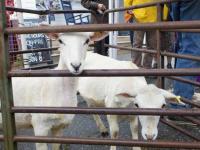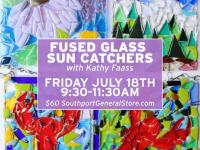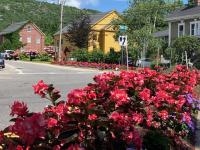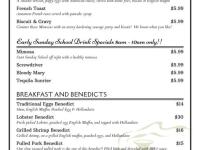Get your landscape buzzing
Bees are keystone organisms, meaning stability in an ecological community significantly depends on the services they provide that environment. Pollination, their primary ecosystem service, is in worldwide decline, as is diversity within the species, according to Sustainable Agriculture Research and Education (SARE), a program funded by the U.S Department of Agriculture.
This pollination crisis has been widely reported in academic, news and cultural outlets for over a decade. Bees have graced the covers of high-profile publications like Time, Nature, National Geographic, LA Times and Wall Street Journal.
A 2010 report from SARE researchers Eric Mader, Marla Spivak and Elaine Evans said conservation biologists, agricultural researchers and farmers have made strides in protecting honeybee and bumblebee colonies, increasing some populations. These initiatives take many forms, such as reducing the use of pesticides, decreasing tillage, providing nesting sites, ensuring chemical-free water and mud sources, mowing less often, and managing honeybee and bumblebee colonies.
A managed population is a domesticated hive that lives in protected enclosures and is used to produce honey and pollinate crops. During off-seasons, they are fed.They receive medical help when needed. They are not wild bees, and they are often non-native bees, regarded as livestock.
Native bees do not live in large hives and managing them is not possible, according to Constance Stubbs, University of Maine research assistant professor, and Nancy Coverstone, UMaine extension educator, in the Cooperative Extension’s Bulletin #7153, but we can manage habitats that help them survive, thrive, reproduce and pollinate, the team writes.
Maine’s more than 270 species of native, unmanaged bees are pollinator powerhouses, and the group of bees that home gardeners can best support. “Conversion of the landscape to residential and commercial uses eliminates natural bee habitats. Often, the developed landscape is not managed to create or enhance bee life,” Bulletin #7153 reads.
Creating a bee-friendly landscape at your home, meadow, or forest entails a few simple considerations:
Water. Bees need access to drinking water, not salt water. If you are not near a fresh water source, consider installing a shallow dish or birdbath with rocks for bees to land on.
Shelter. Bees need shelter from wind, rain and extreme temperatures. Trees, shrubs and tall grasses can provide protection from the elements. Nesting bee houses can be found at most garden centers and range from simple-inexpensive to palatial. A quick internet search will turn up many DIY options as well. Small patches of bare soil in low-traffic areas of a yard or garden will encourage solitary bees to make homes.
Eco-Clean. Avoid pesticide use. Minimize herbicides, fungicides and synthetic fertilizers that might contain unnatural ingredients.
Food. Plant a variety of flowering plants that bloom at contrasting times to provide a constant source of nectar and pollen. When possible, favor native plants. Include both annuals and perennials. Incorporate vegetable and fruit plants. Allow transition spaces at the edges of yards and gardens to re-wild without mowing.
When designing a bee-friendly yard, it helps to lure them with plants they prefer and can access. A bee’s flower preference depends on the length of its tongue. Flowers that attract hummingbirds, for example, most likely will not provide food for bees. “Some bees are generalists while others specialize in the types of blooms they seek. It’s really an evolutionary thing,” said Dr. Frank Drummond, entomologist and professor at UMaine. “Specialists usually have a very unique anatomy, specific tongue length and body size, and behaviors that have been fine-tuned over many generations, while generalists have anatomy and behaviors that allow them to be less efficient across all flower species.”
Bees with long tongues can easily access nectar in tubular-shaped blossoms like penstemon, columbine and honeysuckle, while those with short tongues go for daisies, asters and sunflowers, writes Robin Sweetser in a January 2023 article for Farmers Almanac. Planting a mix of blossom shapes and sizes will attract more bee varieties. And color matters, she notes: Bees are drawn to purple, blue, white and yellow.
Stubbs and Coverstone (Bulletin #7153) and Heather McCargo of Wild Seed Project recommend emphasizing native perennial plants. Blooming year after year provides a more dependable food source and native bees have co-evolved with Maine’s native plants, to mutual benefit. Horticultural plants bred as “doubles” have more showy petals in place of anthers, thus offering little pollen. Some hybridized plants are bred sterile, with no pollen; bees have little use for these nativars.
Succession blooming is perhaps the most valuable aspect of the bee-friendly landscape. Early spring and late fall are challenging times for Maine’s bees as food supplies are scarce. “Some bee species are active only in the spring or maybe just the summer, while others are active all season long, such as bumblebees and honeybees,” said Drummond. “This relates to when you need to have plants flowering in your garden.”
Many gardeners already know horticultural flowers that attract bees, Joe Pye weed, catmint, calendula, lavender, sedum, foxglove and zinnias. Maine is full of expert resources on re-wilding, native plant options, bee restoration and ecological conservation. The Wild Seed Project, a nonprofit in North Yarmouth, and UMaine Cooperative Extension offer volumes of detailed advice for different growing conditions and seasonal bloom times. Below are some native and vegetable choices to help diversify your bee-friendly landscapes:
Early season plants include red maple, apple, plum, cherry, red oak, and willow trees; shadbush, honeysuckles, Pieris and blueberry bushes; crocus, snow drop, daffodil, and tulip bulbs; heaths, dandelion, lungwort, and violas perennial plants.
Consider food crops like sugar snap peas, perennial “walking” onion, and fava beans as additional early season bloomers that bees enjoy, plus give you something to eat. Considerable space is not needed; these edibles can simply mix into other plantings.
Mid-season plants include laurels and rose shrubs; red clover, creeping thyme, dandelion, lamb’s ear, prunella’s, oregano, bee balm, evening primrose, St. John’s wort, coneflower, penstemon, black-eyed Susan, rose milkweed, blue vervain, and chives perennial plants; anise hyssop and borage annual plants. Tomatoes, cucumbers, squash, runner beans, mustard and basil are good vegetable and herb options that can be trellised to save space.
Late season plants include meadowsweet, goldenrod and aster perennials; cosmos, snapdragon and pumpkin annuals.
Those using cover crops or green manures over winter or for fallow seasons should consider oil seed radish, winter legume mixes, sunflower, clover and mustard. Each of these green manures grows well in our coastal hardiness zone.
Wild Seed Project recommends native plants for shade; black cohash, bush honeysuckle, lonicera cinnamon fern, foam flower, wild geranium, Jack in the pulpit, Jacob’s ladder, lobelia, Solomon’s seal, wood aster, wild ginger and wood phlox.
Efforts made in creating native bee habitats will likely have benefits for years to come. Bee-friendly landscapes provide needed space for bees to forage, build nests and rear the next generation of pollinator dynamos. We benefit from these keystone buzzers every time we eat Maine’s wild blueberries, or crunch on a Black Oxford apple, and carve a Halloween pumpkin. They deserve a home in our landscapes.

